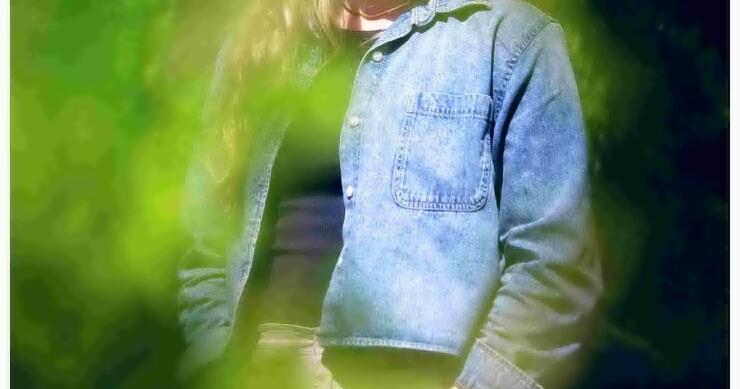BIG SKY DOCUMENTARY FILM FESTIVAL
The Big Sky Film Institute has completed a change in leadership.
The nonprofit behind the state’s largest film event, the Big Sky Documentary Film Festival, has hired a new executive director, Julia Sherman, after the amicable departure of its longtime chief, Rachel Gregg, earlier this year.
Sherman, who studied the effects of film on social movements in college, recalls volunteering for the festival years ago and seeing firsthand how documentaries, which sit at the intersection of storytelling, history and art, can have an impact on crowds.
“What an amazing platform to start conversations that need to be had,” she said.
Sherman has been with Big Sky for eight years, working most recently as education director and grant manager, with prior stints as operations manager, associate programmer, and more.
People are also reading…
While the funding environment for films is challenging, she feels the festival is in a strong position since it’s reached a comfortable size, built industry connections, and maintained ties with the local audiences and sponsors.
“This is not just for filmmakers and industry — this is also for our community, and we’ve been balancing that really well over the years,” she said.
Big Sky, the largest film festival of its kind in the region, was first held in 2004, with 75 movies playing at Roxy Theater over six days. It’s grown in tandem with the rising interest in documentary film as a whole.
Back in February, the 21st installment boasted a 10-day schedule and more than 150 movies from around the world, complete with more than 300 visiting filmmakers, at venues all around downtown. They estimated attendance at about 26,000.
When assembling the lineup, Sherman said they have to consider what movies will appeal to audiences here along with presenting movies that are “pushing the edge” creatively, she said.
The festival has four competitions, and two have the blessing of the Academy of Motion Picture Arts and Sciences. The winners of the two short-form movie categories automatically qualify to compete for the Oscar for best short documentary. The five-day DocShop conference, meanwhile, brings in representatives from places like HBO, New York Times Video, and more.
Sherman grew up in Fairbanks, Alaska, and attended the University of Montana, earning a degree in communications and a certificate in African American studies. She worked as an archivist and historian in the latter department, examining the effects of visual media and film on 1960s social movements.
She was doing archival work primarily in criminal records and some that involved historical footage, and examined the history of incarceration of African Americans in Montana, pursuing the question of why the state has such a low population of Black people.
Volunteering at Big Sky “opened my eyes to how archival footage can be used to tell modern stories, and seeing how you can bring people into these older stories,” she said.
While academia could feel siloed, the festival drew curious viewers to the same material and subject matter in a different format.
Over the years, she also worked at VidCon, the massive annual YouTuber conference, and Tribeca Film Festival in New York.
She’s worked closely with Gregg on myriad aspects of the nonprofit, including the annual push for grants, and felt she had the skills and relationships in place to take on the leadership role.
For the past six years, she’s served as the education coordinator, running six programs that span from fall to spring and bring documentary film programming, including Indigenous films, into schools. She’s grown the effort from reaching 3,000 students to 13,000 last year.
Those media literary efforts, teacher trainings, and even the DocShop panels for the public, can help people think critically about video in a time when streaming has made documentary popular, but often types that succeed easily on streaming, such as true crime.
“We’re trying to do our part in uplifting those films that are maybe a little different, or spotlighting stories that don’t often get told, and helping bring attention to a more diverse way of telling stories,” she said.
After eight years at the helm, Gregg felt it was the right time to step down — both for personal reasons and to give the festival some fresh energy and perhaps a fresh vision.
“It’s undergone something of a transformation in the last few years in terms of quality and reputation of the event,” she said. They’ve remained focused on serving the Missoula community, and now entering its third decade, it’s “an opportunity to build out the artist side.”
Sherman has been a part of that through the educational programs and Gregg thought it will translate well into Doc Shop conference and the 4th World Media Lab, a yearlong filmmaker development fellowship for Indigenous creators in the earlier half of their careers.
That last program is one she’s most proud of. Her predecessor, Gita Saedi Kiely, had completed a grant application, which was accepted after her departure, and Gregg and company took it on.
She’s also proud of helping raise the profile of the event in the national film community, through efforts large and small. It could be streamlining the graphics and website, sending staff (or going herself) to other film festivals to network, or ensuring that visiting filmmakers have a good experience here in Missoula. It’s a word of mouth industry, she said, and those efforts can be borne out through reviews on FilmFreeway, a popular platform for festival submissions, or Big Sky’s regular inclusion on MovieMaker magazine’s annual list, “50 Film Festivals Worth the Entry Free.”
On the 2024 entry, the publication said Big Sky is “one of the best places on earth for documentarians to find collaborators, backers and companies to release their films” and said “in great and bad times for documentaries — and in its 21 years, Big Sky has seen both — it has kept the focus on its core mission of putting great films in front of great audiences.”
Gregg helped overhaul the online ticketing system, which was a necessary piece of tech to have ready in 2021 when they put on a virtual-only event for the first time during the pandemic.
As a whole, she said the festival has become “a destination event. It’s of this place, but can compete with a lot of the events our size,” she said, alongside others like True/False Film Fest in Columbia, Missouri, or Full Frame Documentary Film Festival in Durham, North Carolina.
She’s also proud that the festival has been able to build and start paying a diverse team of 25 or so pre-screeners and associate programmers who help comb through the 2,000-plus entries. (Some festivals only use volunteers.)
And finally, there’s the “critical mass” of energy at the event itself.
“My favorite part of the festival is meeting all the people who come to Missoula — whether it’s the filmmakers, or the past few years, there are people who travel from out of state,” she said.
She also said it’s been a pleasure to interact with the filmmakers, who are artists, activists and storytellers engaged in a tough field, at the high point of the creative arc: festival screenings.





